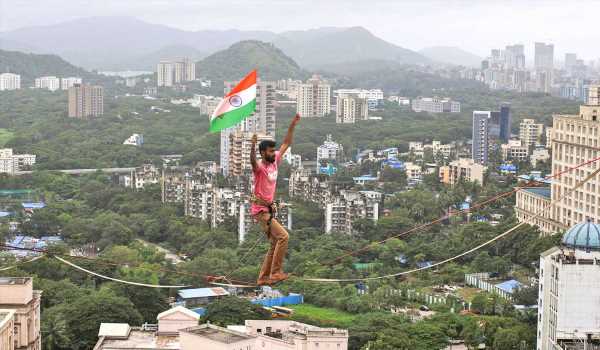Happily, it does not require the world to hold a mirror up for us.
We can look at ourselves and understand easily if we choose to be honest about where we find ourselves three quarters of a century after independence, asserts Aakar Patel.
New India is again the world’s most populous nation. Old India was also the most populous place in the world till 1947 so this is in that sense not new.
If the idea is that political boundaries do not affect historical nations then India has always been the place with the most people.
But political boundaries are real and the rest is imagined so let us pretend we are here for the first time.
Some two decades ago India announced it had crossed 100 crore people and Atal Bihari Vajpayee was prime minister.
A randomly selected baby was declared the one billionth child (though on a smaller scale, there was pomp and ceremony about everything then also) and a new era was declared.
In those days India used to conduct the Census so the outside world was not required to inform us that we have crossed China.
Around that same time, A P J Abdul Kalam wrote a book called India 2020 about how we could and likely would become a developed nation by 2020. It had chapters on how this could be achieved.
I went back to it recently and it is striking how innocent it is.
As we can see around us, none of the things it foresaw or hope for happened.
We bumble along as we always have though the slogans keep changing.
We are in Amritkaal now and if there is a baby declared officially as the one that helped us overtake China then it will need to be given an assessment of where we stand.
The first point is on demographic dividend, which arrives when the majority of the population is of working age.
We entered this period a few years ago, but have not reaped a dividend.
The reason is that there are few jobs for those who are available to work.
But those available for work are only 40% of the population over 15.
Indian women in particular have fallen out of the workforce in larger numbers proportionally than Pakistani and Bangladeshi women.
However this is not only about gender, but the whole population.
A few days ago the Wall Street Journal published an article with the headline ‘India’s population surpasses China’s, shifting the world’s center of gravity’.
The article explained that India had ‘added zero net jobs over the past decade’ though over 100 million (10 crore) new people entered the labour force.
The total number of Indians employed in 2022 (40.2 crore/402 million) was fewer than those with work in 2017 (41.3 crore/413 million).
Not only have we not added new jobs, we have lost some of those we had.
The reason is that Indians are not investing as much as they used to in the future.
The Economic Times carried a story in September 2022 headlined ‘India’s investment rate declines to 31% of GDP from 39% peak’.
World Bank figures show that India’s private sector share of gross fixed capital formation fell from 31% of GDP in 2011 to 22% in 2022.
We can ask why. The answer is that there is lack of optimism about the future and a lack of confidence.
If we ask why this is the case we will be led to answers we will not like, which have to do with social strife and the focus of the government.
Large numbers of Indians including those we are bullying and harassing will not invest in a future that they think is bleak.
This also explains the record number of millionaires feeling India, and presumably adding to the heat of nationalism from abroad, this time holding their European and American passport.
On April 20, 2023 the Financial Times, the other major global business daily, published an editorial headlined ‘India’s democratic backsliding’.
This editorial was also ostensibly about India’s population story, but the newspaper’s editorial board wanted to communicate something else, which our media does not tell us.
The advantage India has, or rather Indian governments have, is that all nations think purely or mostly in self interest when it comes to international relations.
At a time when inflation is high, when there is war in Europe again and China has become the primary threat, India is seen as a counterbalance.
It would be nice if India were to reflect the values of pluralism and openness that it claims to hold, but it is fine if doesn’t fully.
There is some element of internal pressure on other democracies to tell wayward liberal states to get back in line.
However this has its limits and in a time of global crises the limits have shrunk.
We should assume then that, despite the harsh words in the reputable press of the outside world, we can carry along in our reverie of being Vishwaguru in amritkaal.
Happily, it does not require the world to hold a mirror up for us.
We can look at ourselves and understand easily if we choose to be honest about where we find ourselves three quarters of a century after Independence.
Our Constitution and its values are not at the core of our politics.
If anything we are drifting away from that core faster than we ever have been without any inkling of what we are moving towards.
The arrival of this news of being the world’s most populous nation should be seen in the light of this reality.
Aakar Patel is a columnist and writer and you can read Aakar’s earlier columns here.
Source: Read Full Article

